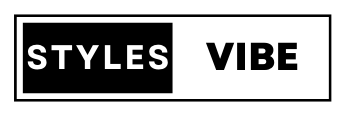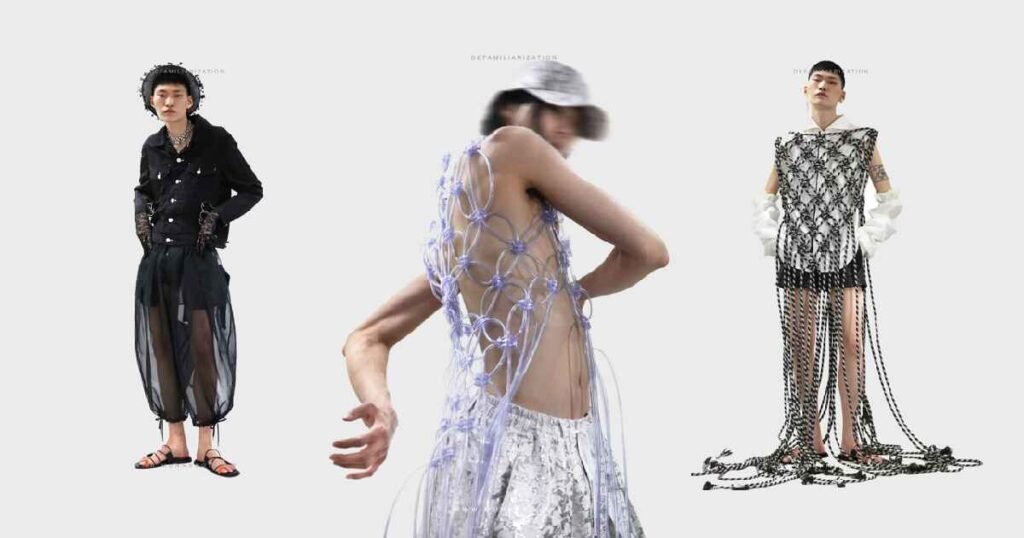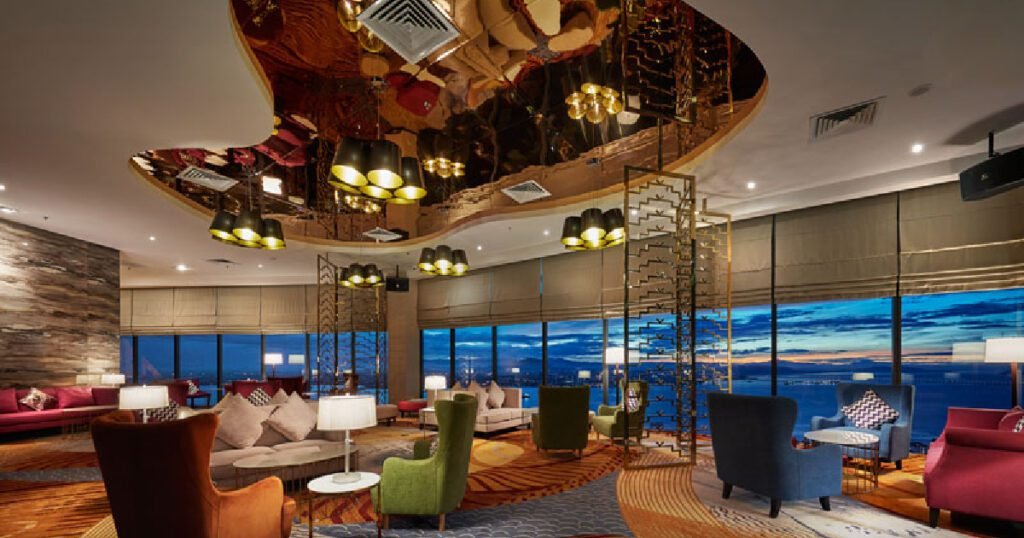Introduction
Korean futuristic fashion is not only clothing — it’s the culture of mixing past and future, tradition with avant-garde. Picture yourself strolling down a street in Seoul, where the citizens are so obviously from another universe; they appear to be wearing science fiction costumes—except most of those garments carry nuances revealing Korea’s rich past. This melding of the old and new makes competitive fashion unique in Korea. So, where did this trend come from, and how will it continue?
KOREA How South Korean Fashion Is Going Futuristic
Korea has been one of the initial trendsetters in any field, whether technology, entertainment, or fashion. High fashion in the country has taken on a futuristic tone, just like the nation’s approach to technology, and it is all part of staying one step ahead globally. Unsurprisingly, South Korea’s fashion industry has embraced technology for a country in the thrall of Silicon Valley: look at some experimental designs featuring wearable tech (such as those above) or video game-inspired virtual reality apparel! It’s not just what people wear now, but how they’ll dress in the future.
Technology in Korean Fashion
At the time, technology in Korean fashion seemed impossible. Tech is etching its way into fabrics that shift hues or wear like a second skin, and there’s no end to what may come from it. The era of shopping from the comforts of some online stores increasingly uses Augmented Reality (AR) and Virtual Reality (VR), thanks to which consumers can try on clothes without putting them in real life. What was pure science fiction just a couple of years ago is now something new in the Korean fashion market.
Wearable Tech (The Human Dimension)
The wearable technology is not limited to smartwatches or fitness bands now. Fashion designers in Korea are building technology into clothing, which is the embodiment of wearable tech. It could connect to a smartphone or other device worn by the person who finds it; Aj essentially wants people who spot his jackets on trains to unlock its social media feed. Why are these not only futuristic but currently exist?
Combining Tradition and Modernity
The future of Korean fashion brings us a mix of the old (traditional Korean elements) and new designs, blending them into future wear. A futuristic take on the traditional Korean dress, Hanbok. A fusion of fabric innovatHanbokd tailoring cuts to create a new signature look that pays tribute to traditions yet at the same time into future directions. Designers reinvent classic looks with neoprene, metallics, and even LED lights. The result is an aesthetic that feels part flashback; the party leaps forward.
The significance behind a hanbokHanbokanbok is more than just clothes; Hanboklects the Korean gene, if you will. And as tall and large a man as he was in the 1990s, Was there an algorithm update Kardashian scandal poking fun at them from falling for her children’s papa!
Sustainable Fashion and Futurism
With the global move towards sustainability, eco-friendly fashion has also become a way of life in Korea. But this isn’t just futuristic Korean fashion; it’s eco-friendly, sustainable clothing. With that, designers use materials made from recycled plastic, organic fabrics, and even lab-grown leathering various futuristic designs. Korea is tech-heavy when it comes to the future of fashion, as well as green.
Futuristic Fashion And Eco-Friendly Materials
Korean designers are to the rescue regarding sustainable style with biodegradable ruffles and zero-waste patterns. This decreases the environmental impact and establishes a new norm for the worldwide fashion industry.
Influential Korean Fashion Designers of the Future
A group of Korean designers is leading the cause of futuristic fashion. Jin Teok, Lie Sangbong, and Park Seung Gun are the future of fashion in the 21st century. These designers are considered the most innovative in terms of material technology and application, taking wearable properties beyond what was possible before.
Jin Teok: The launching pad/context of futuristic fashion.
Jin Teok is frequently praised as one of the best futuristic designers in Korea. She has brought a new section of dedicated clothes using innovative fabrics and intelligent technology designed for athletic men, making her a vital trendsetter in the market.
K-Pop and Pop Culture
K-pop and Korean pop culture have also brought futuristic fashion to the forefront. Rapidly descending into a state of near-unconsciousness, an experience that hundreds stretch to each day in classes like 90 with pier are, decked out head-to-op and butt-to-heel by K-pop idols sporting the best/ most uncomfortable clothes whet high fashion and streetwear get busy for noticing. Paradoxically, these looks drive trends and kick the fashion envelope just for cos kicks. THE IMPACT OF K-POPWith its influence all across the globe, K-pop is a cultural phenomenon that has primarily shaped futuristic fashion in Korea.
K-Pop Idols as Fashion Icons
BTS, BLACKPINK, and EXO are not simply K-pop stars — they’re fashion avatars! Their style is bright and futuristic, inspiring many fans and other designers in Korea; this has meant a real focus on some of the more progressive designs seen only from K-Pop.
A sneak peek into the future — Fashion Shows
KoreaFashionWeek not only defines fashion shows as simply runways of new clothes but also seeks to experience through UCCs the future that has been accessed so far. Designers now use events like Seoul Fashion Week as platforms to experiment with anything from cutting-edge technology and multimedia, even venturing into the realm of holograms in their presentations. These shows are the breeding grounds for what fashion has in store — a glimpse of what we might be wearing.
Seoul Fashion Week: A Platform for New Ideas
Seoul city of Fashion-yun SUK YOUN( Editor in Chief). とうめたろうEUSA FASHION is based on the grand promenade where label managing directors gather but was born from a fashion event. An essential for anyone interested in the future of fashion, this essential stop-off is renowned for its innovation and technology slant.
Perception of Consumer and Adoption
Although futuristic fashion in Korea is growing, it still faces obstacles. These trends are successful only when consumers perceive them as suitable and adopt them. The younger demographics are more open to these designs of the future, but that could affect older consumers. However, this gap is predicted to shrink as technology continues to become more and more integrated into everyday life.
Fashionistas Over the Generations
The adopters of tech-forward fashion tend to be digitally native, early adopting consumers who want something that will help them stand out and is accessible from the mouldlines. Old generations may struggle to fit into these trends for the above reason, preferring a more traditional style.
Challenges and Opportunities
This advancement in Korea’s futuristic fashion has challenges and doors to new opportunities. First, how do we balance innovation and serving practical needs? On the other hand, there are also substantial growth opportunities, especially in the global market. It is anticipated that as Korean fashion further expands its diversity, designers must overcome these challenges and find innovations in new areas.
Traditional Subzero Refrigeration, Reimagined
One of the most daunting tasks in futuristic fashion is maintaining this balance between tradition and innovation. Now, while walking on eggshells to break the norms, nodo t tread too far from lines of cultural importance.
Green Makers: The Future of Futuristic Fashion in Korea
In other words, Korea seems to have a bright future in futuristic fashion. If it takes advantage of rapid technological changes and possesses an excellent cultural foundation, Korea has the potential to be at the forefront of this fashion revolution. We can only imagine what even more creative designers will come up with in the years ahead. Fashion will blend with technology and culture more than now, leading to an age of new-futuristic Korean mixed style.
Conclusion
In Korea, futuristic fashion has transitioned past the latest style fad and is now accepted as a movement that pushes the boundaries of what exists under the realm of fashion. These products emerge from traditional technology with a modern edge, resonating strongly with new consumers on a global scale. This likely explains why it and Korea will lead the way in this amazing new field as our world changes ever-increasingly. Explore the Hobby of Women.
Frequently Asked Questions
What is futuristic fashion in Korea?
In Korea, future fashion is defined as blending advanced technology with design touches that are very modern and, at times, traditional Korean minimalism (%).
How is technology used in Korean fashion?
Korean fashion technology includes advances in intelligent fabrics, wearable tech, and even AR/VR, which pairs up with clothing to facilitate creative or interactive designs.
What role does K-Pop play in futuristic fashion?
Many of the designs seen on K-pop idols seem like they come from a galaxy far, far away — meaning that wearing futuristic looks has spilled into trends throughout fashion in general.
Are traditional Korean garments like the Hanbok still relevant?
Indeed, traditional clothing like the Hanbok is revisited with new mateHanbokand designs—thus finding their place amongst Korea’Hanbokion of tomorrow.
What lies in the future for Korean fashion?
ON TO THHanbokRE There is perhaps an even brighter future for Korean fashion as it emerges from the technology, sustainability, and design innovation onslaught that has been happening.




